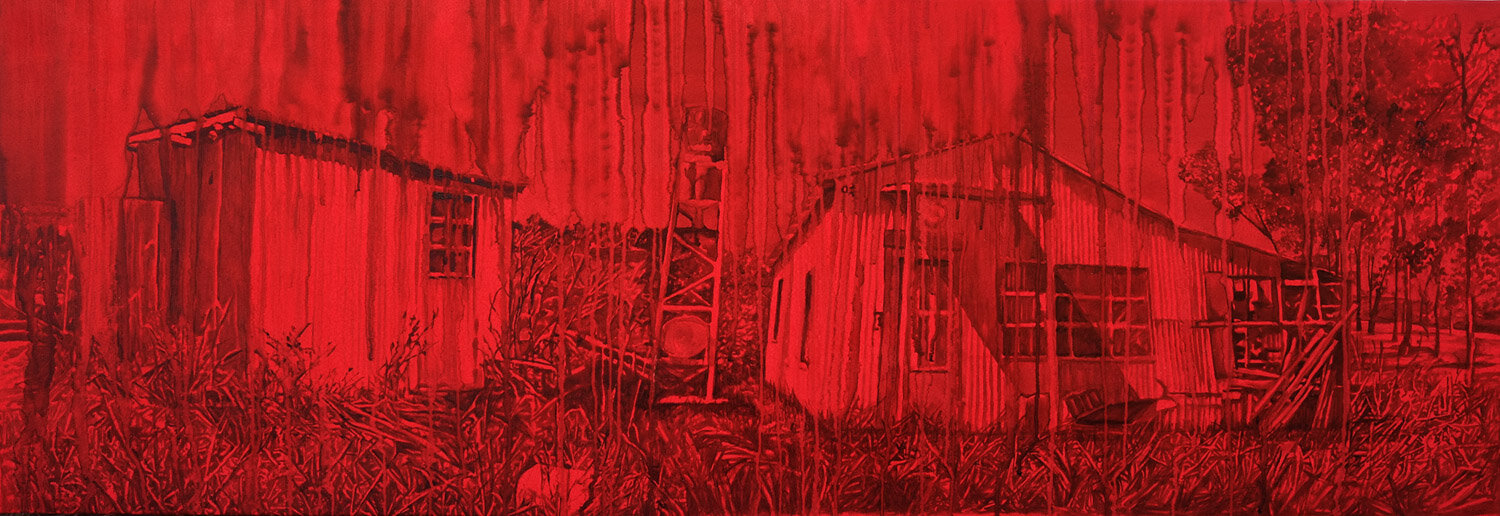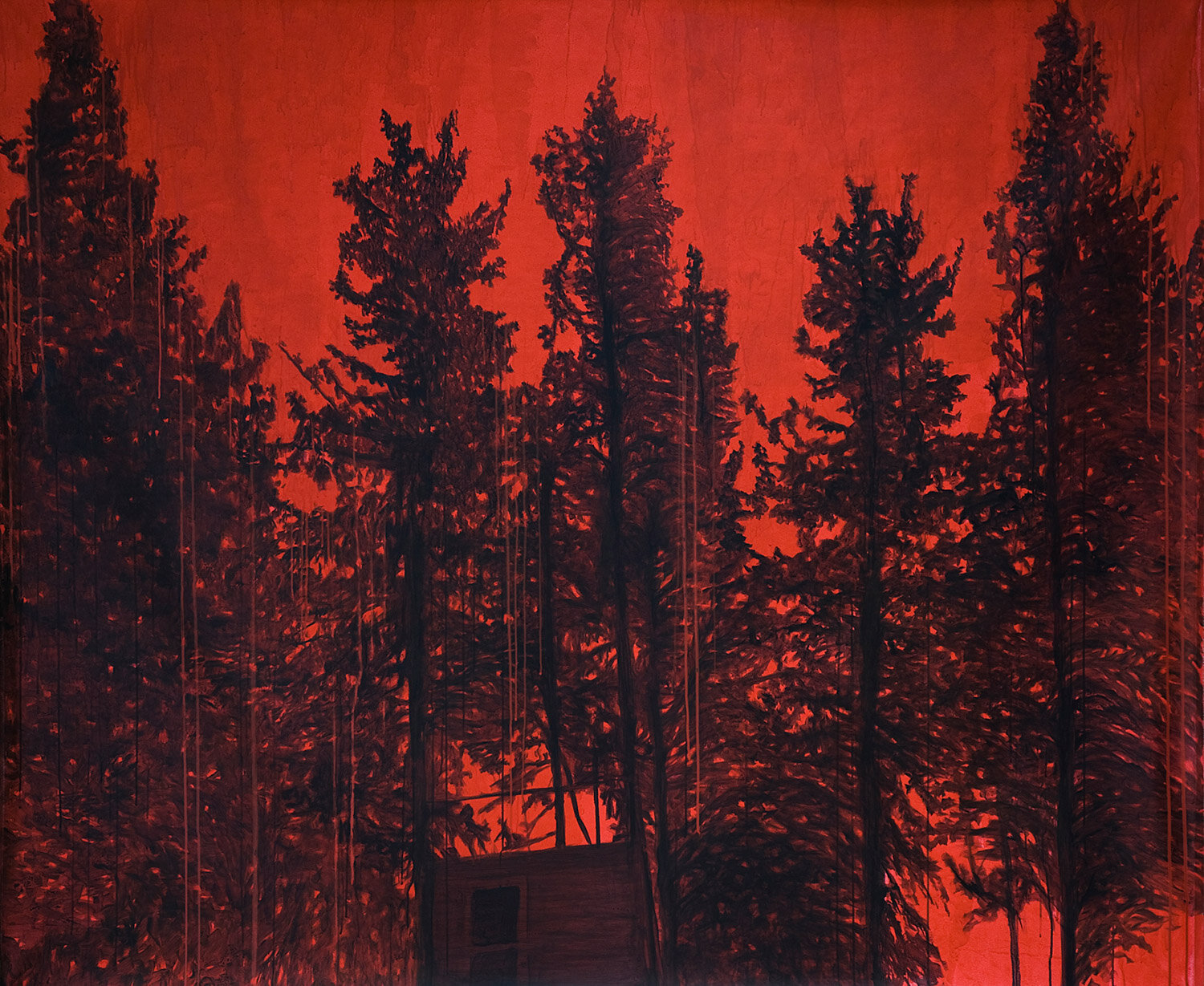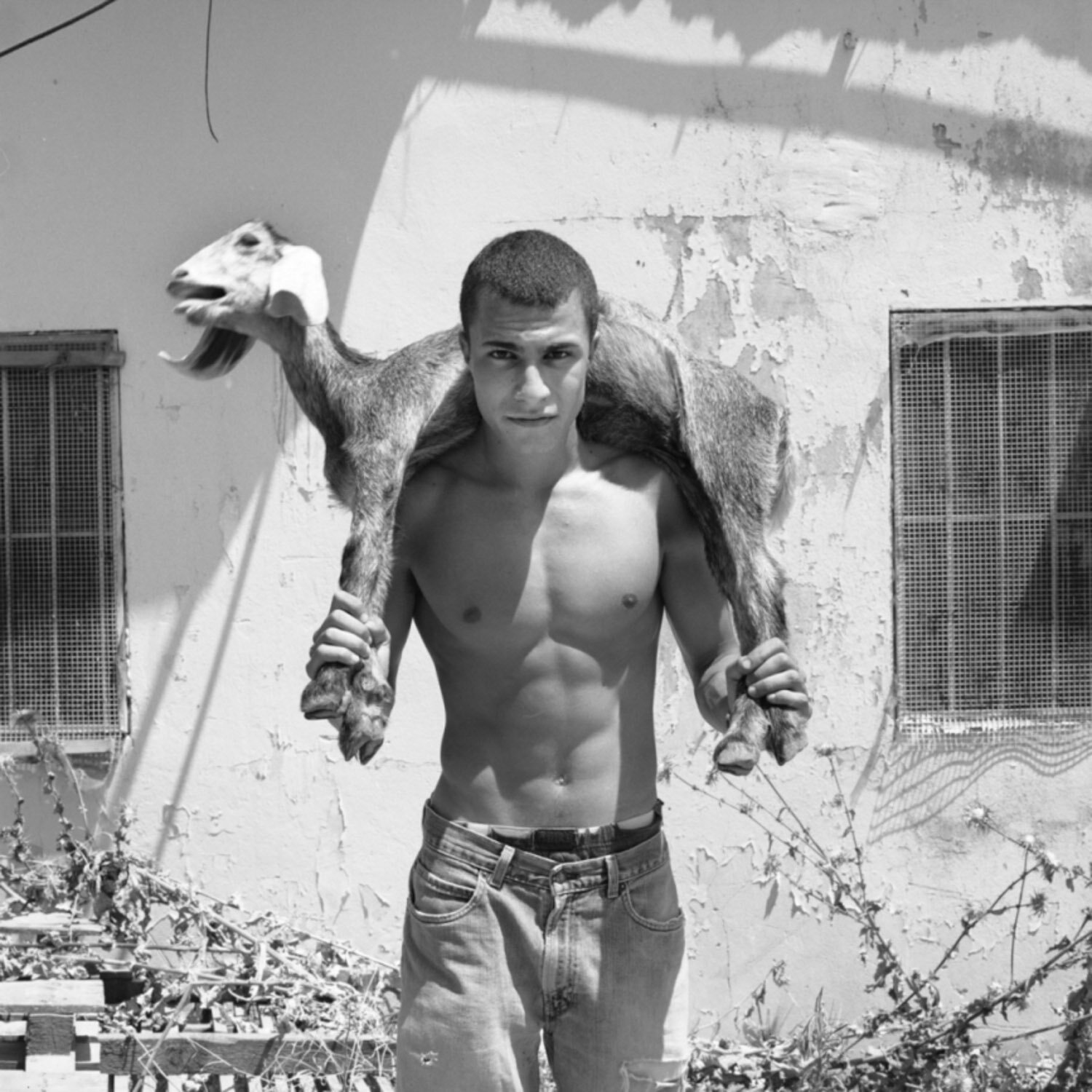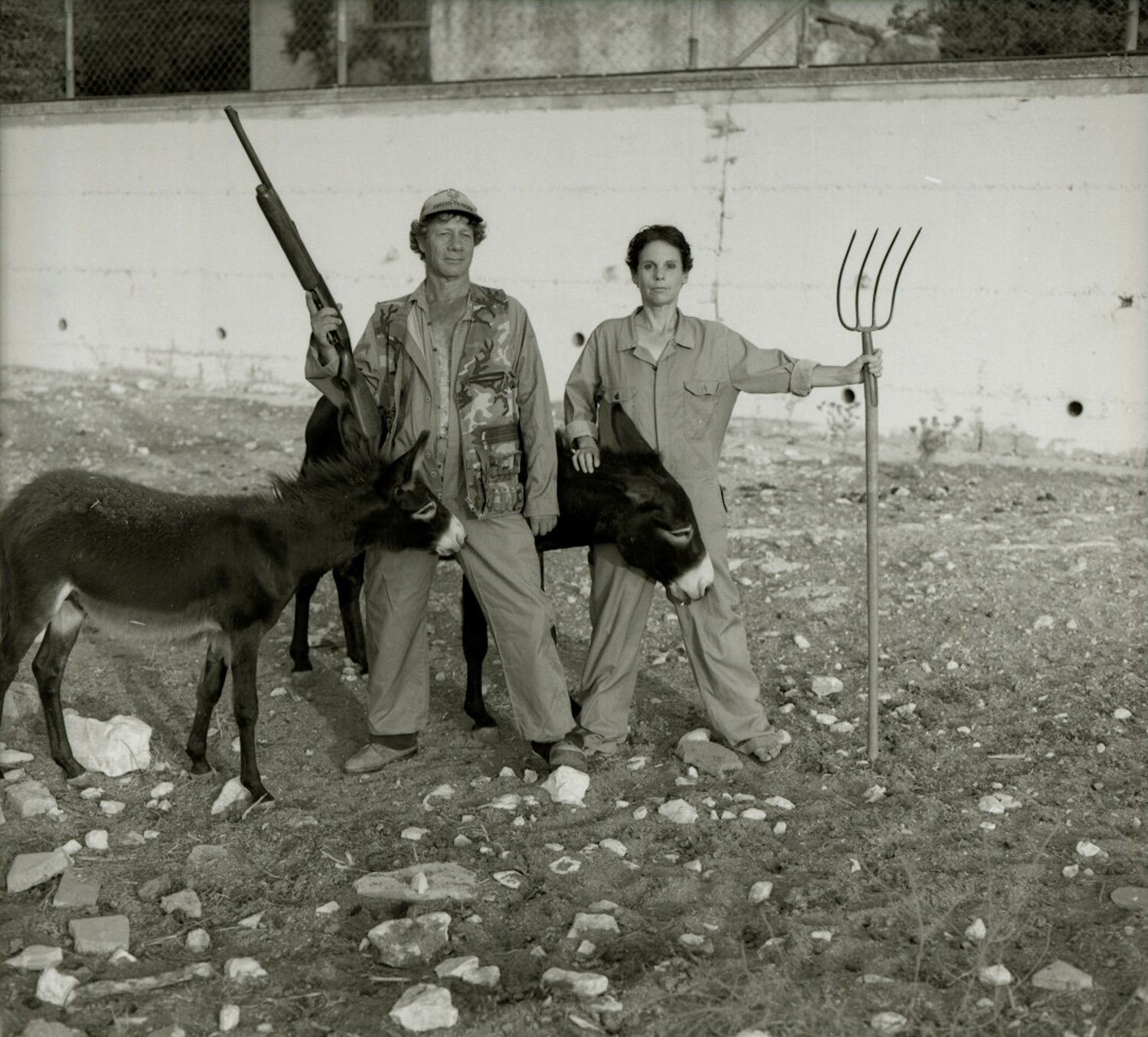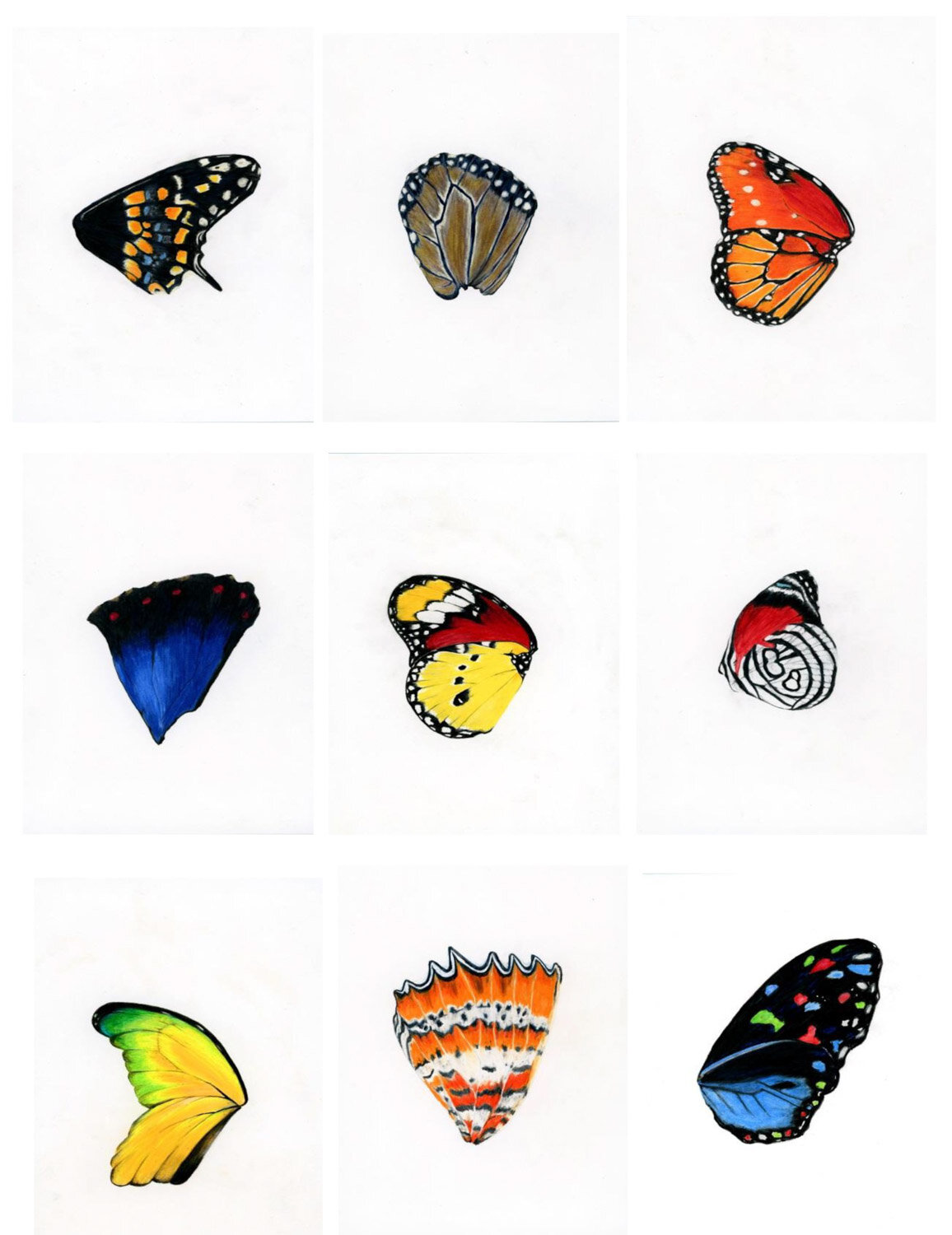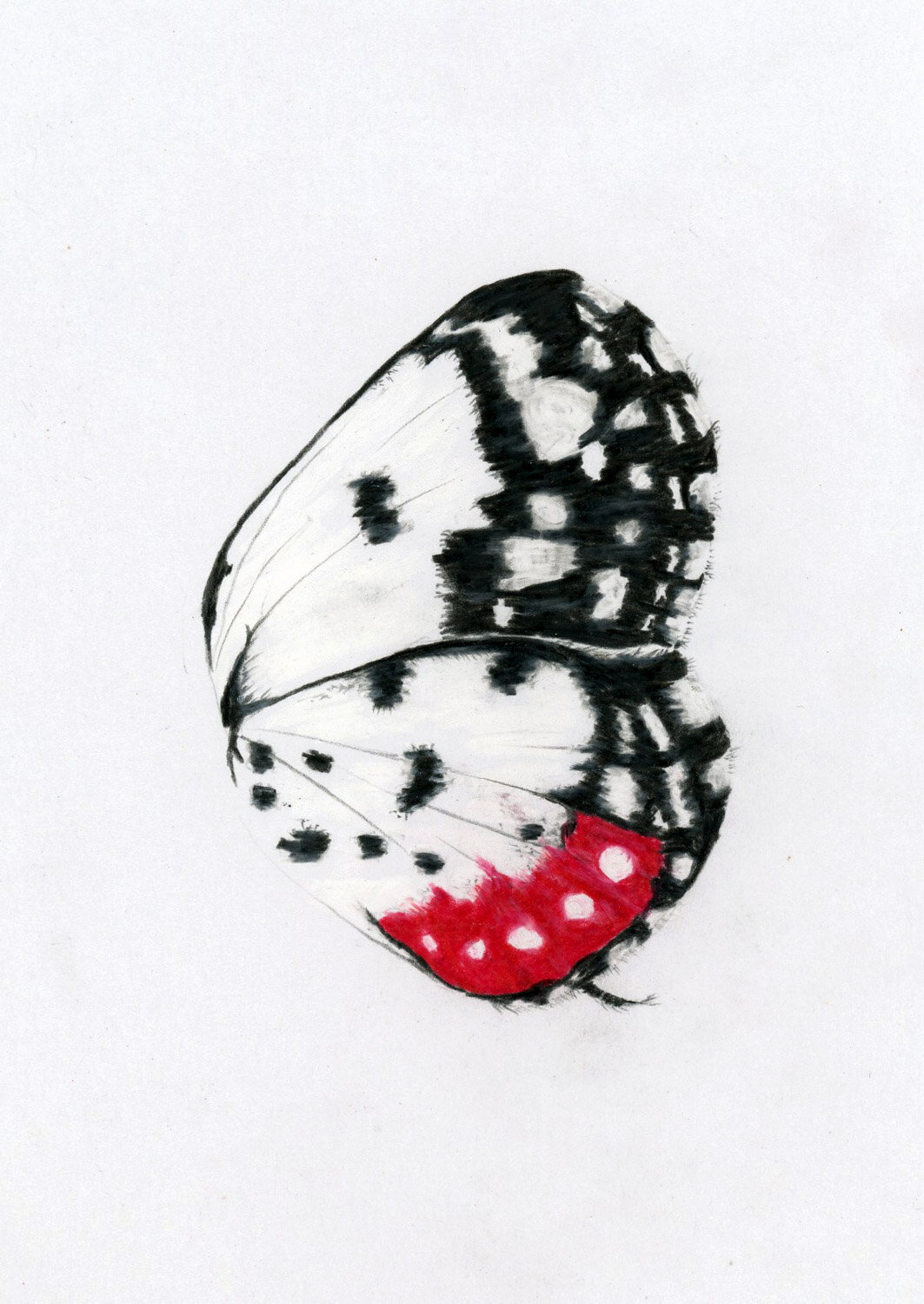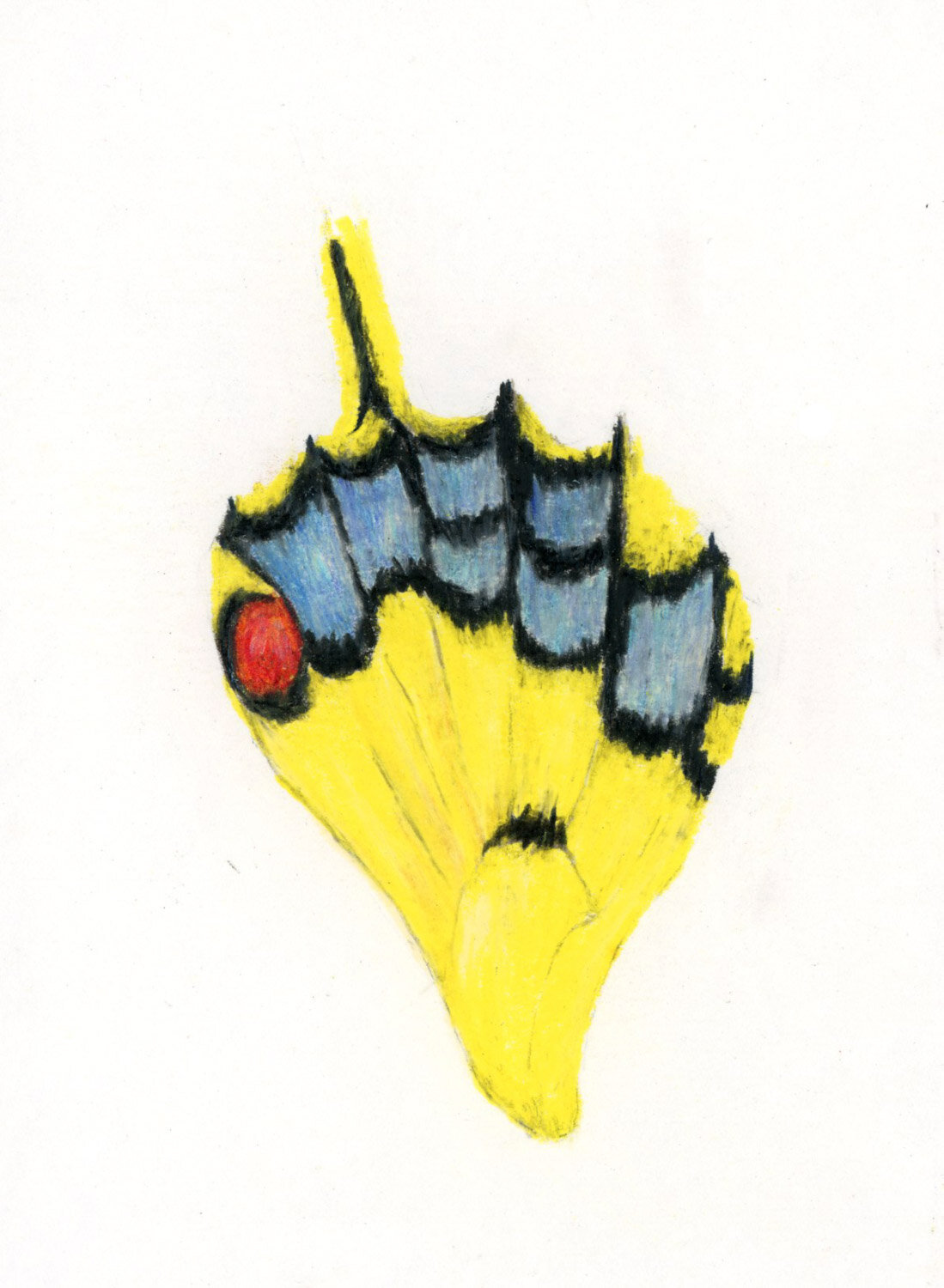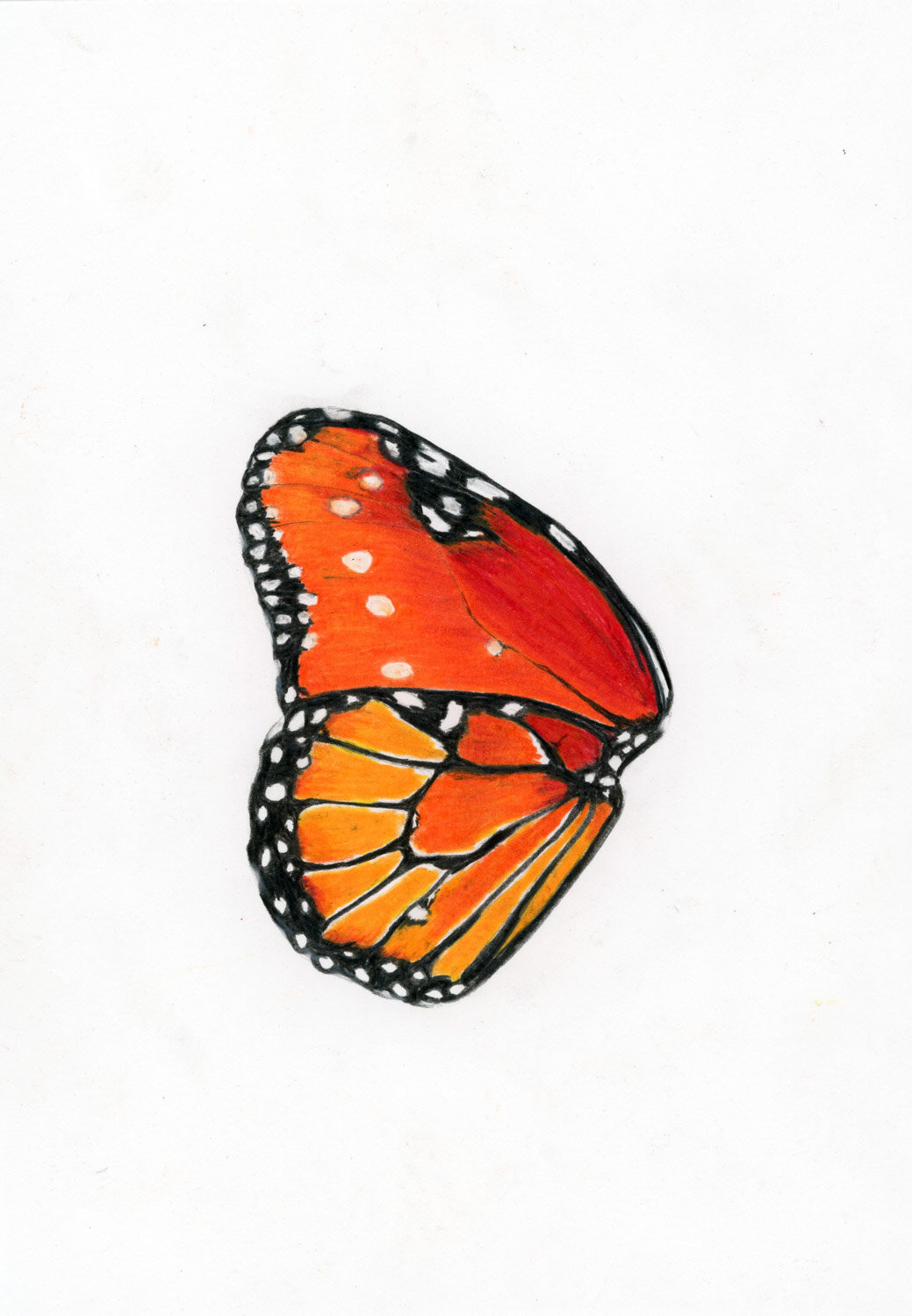איש החול
איש החול
אילנה דותן / זיוה ילין / בועז לניר / אפרת קליפשטיין
אוצרת: רותם ריטוב
30.10.21 - 17.09.21
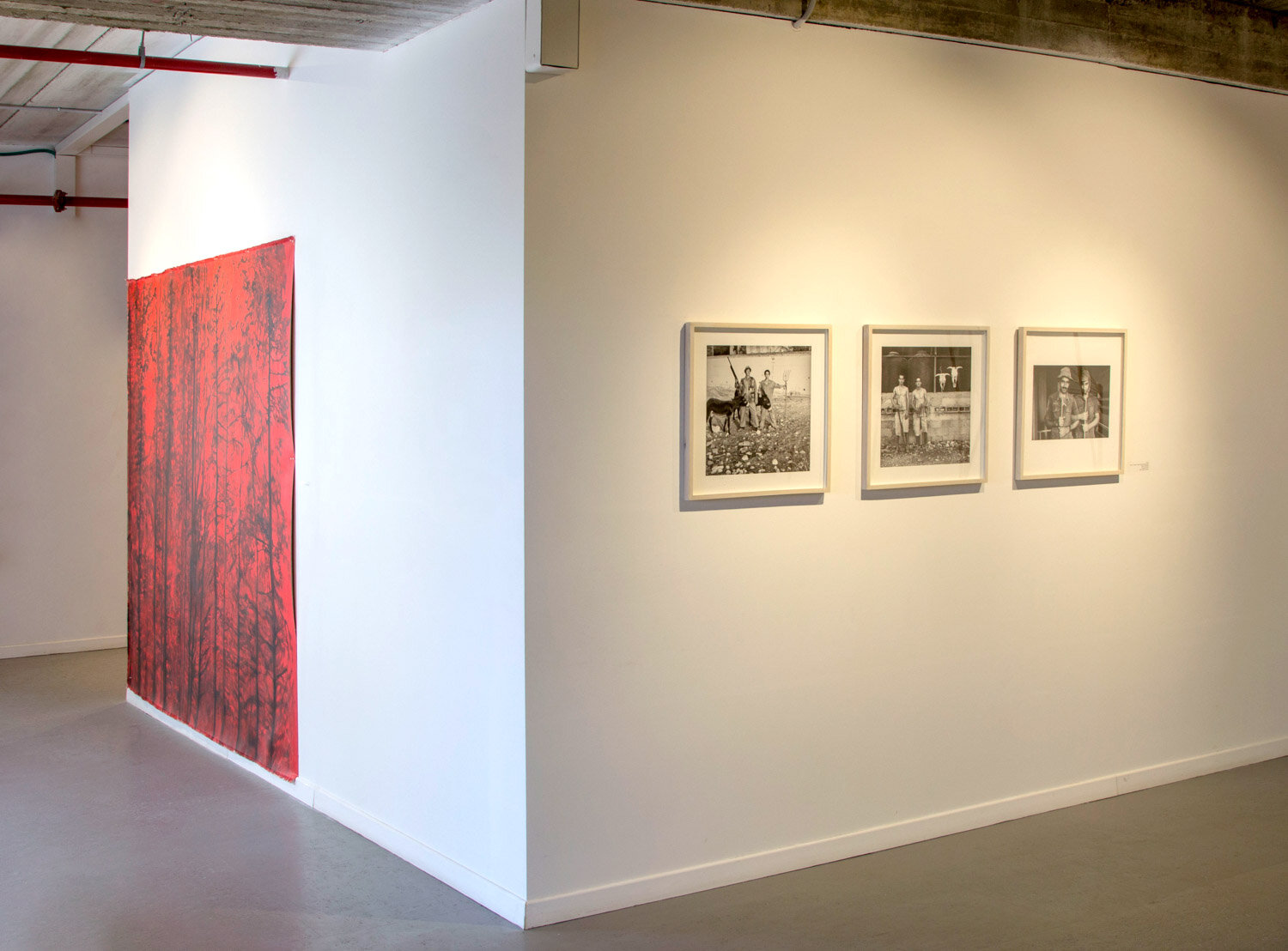
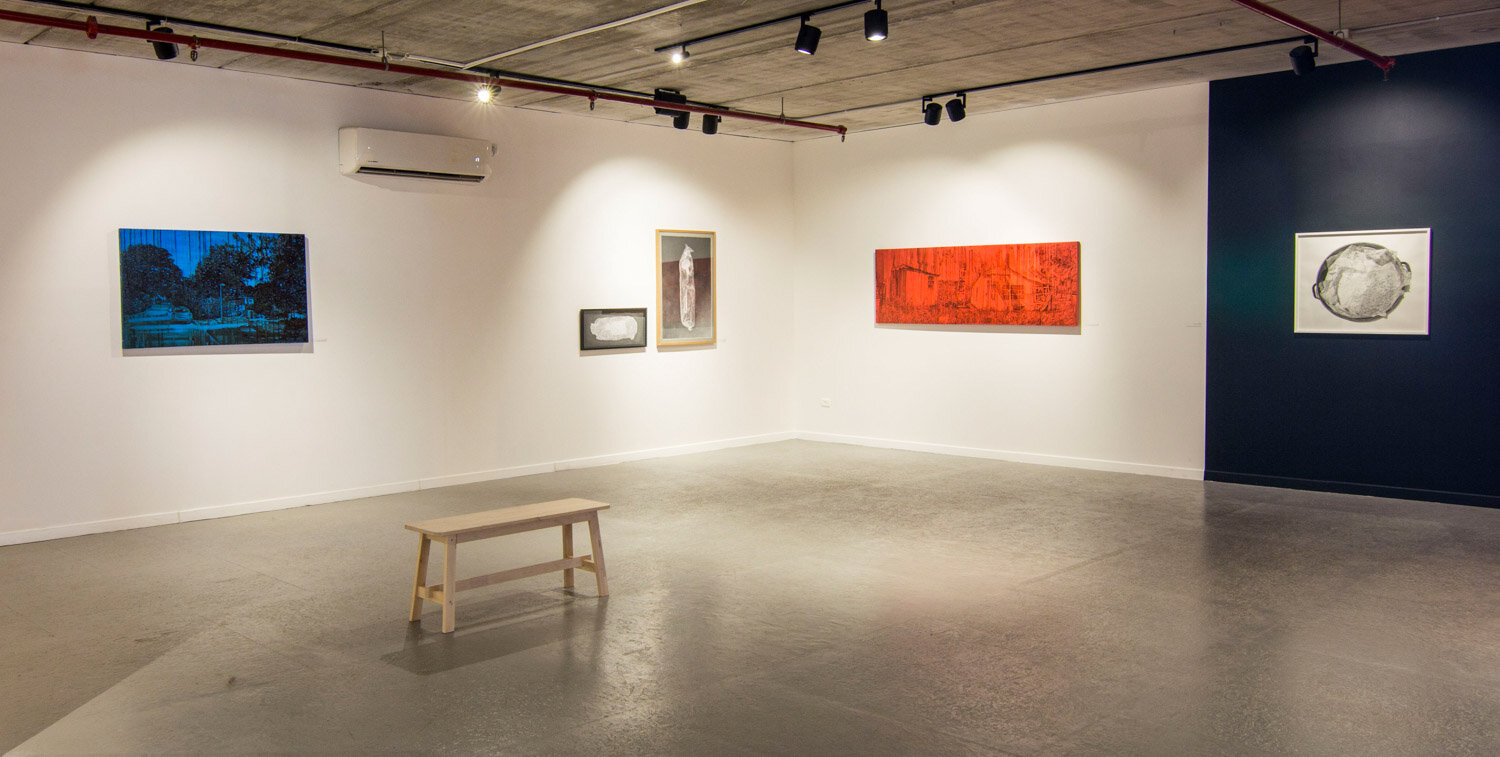
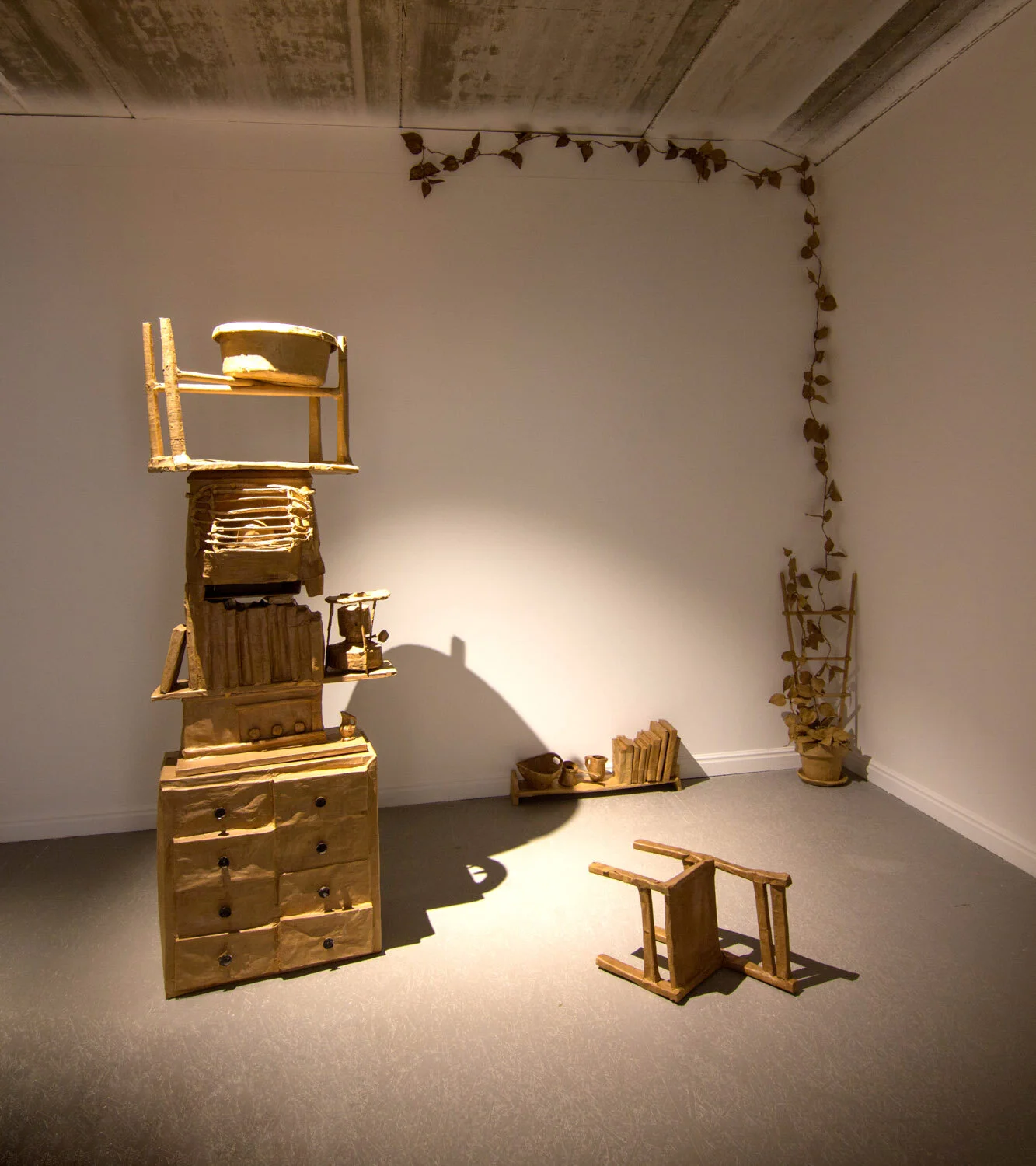

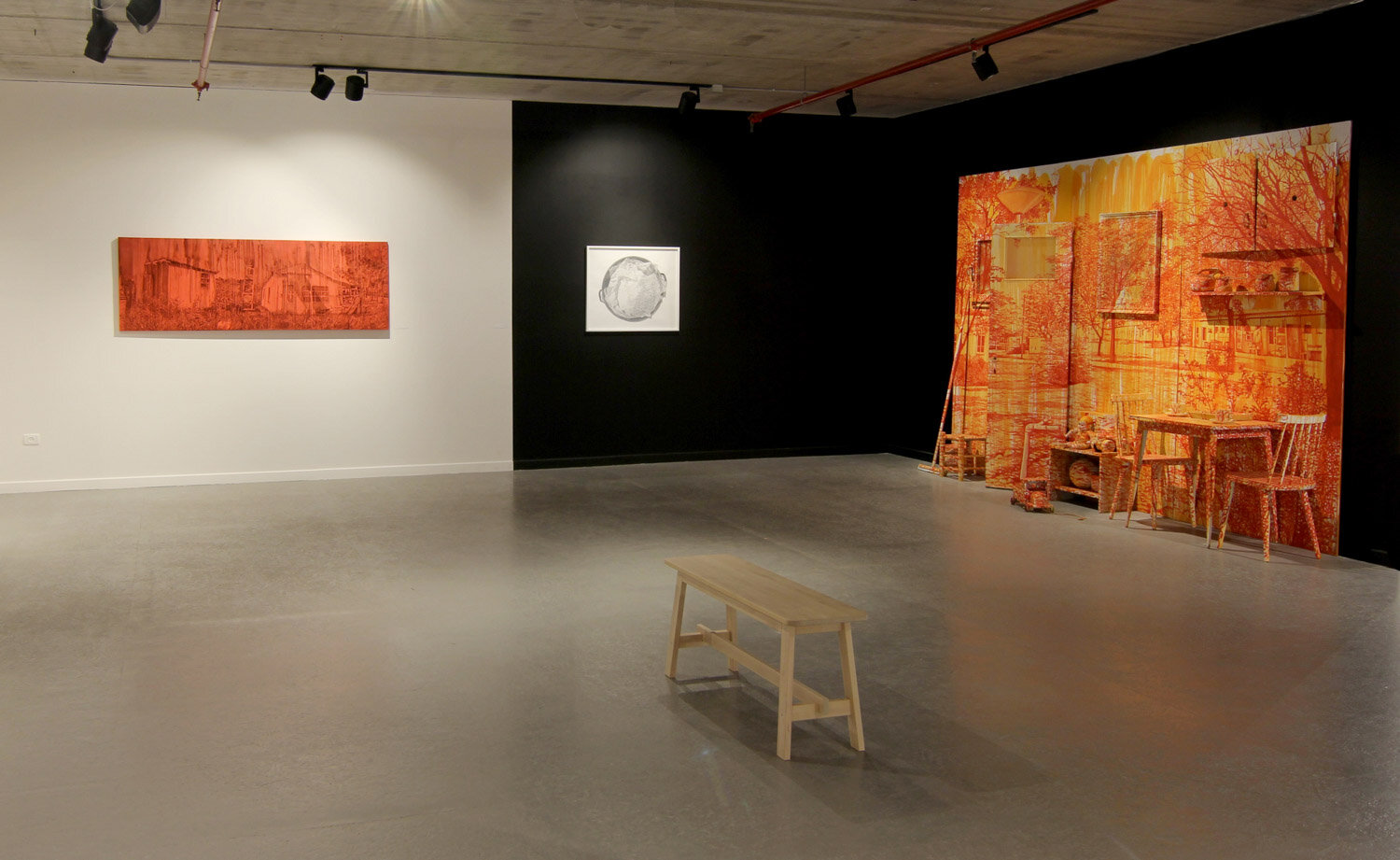
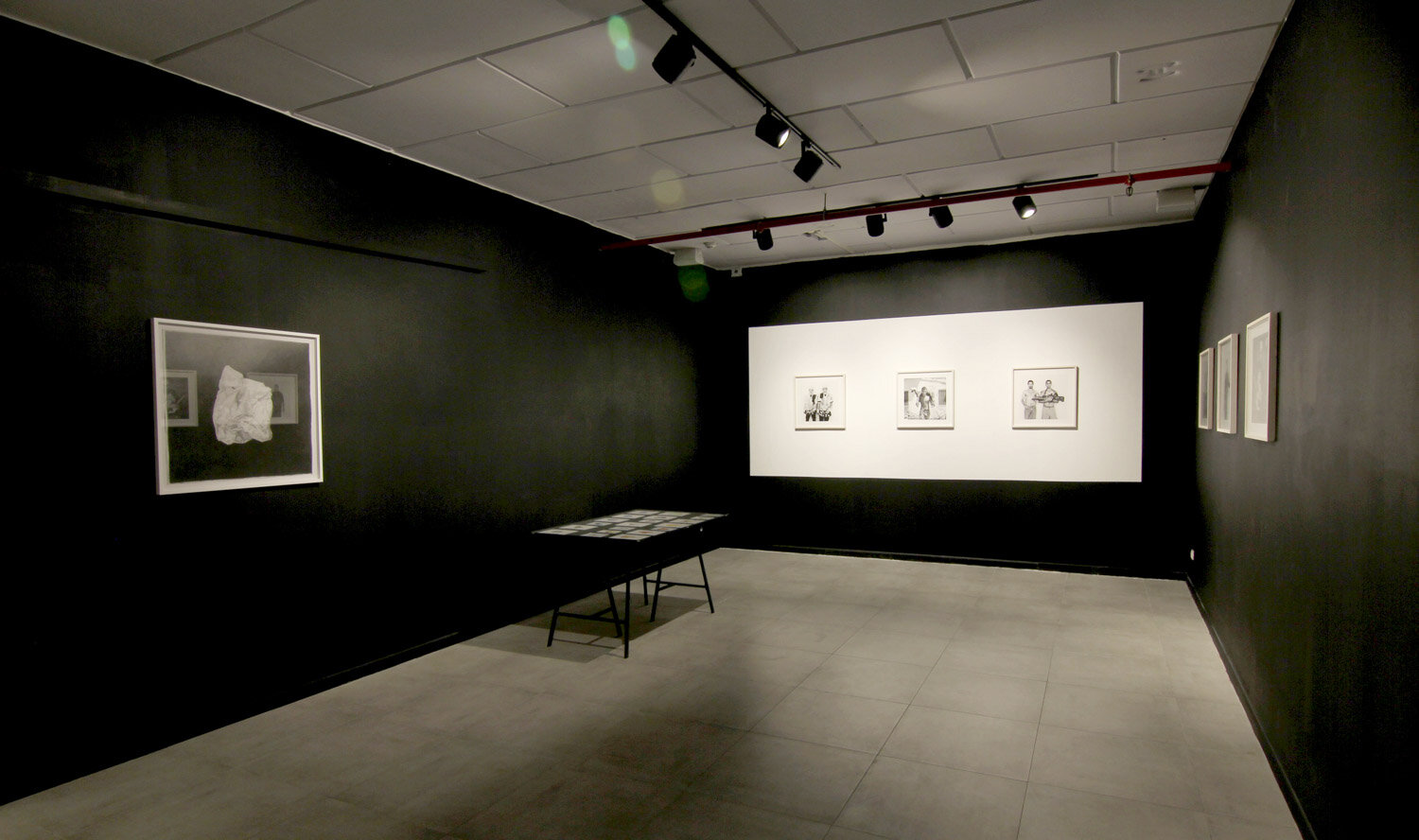
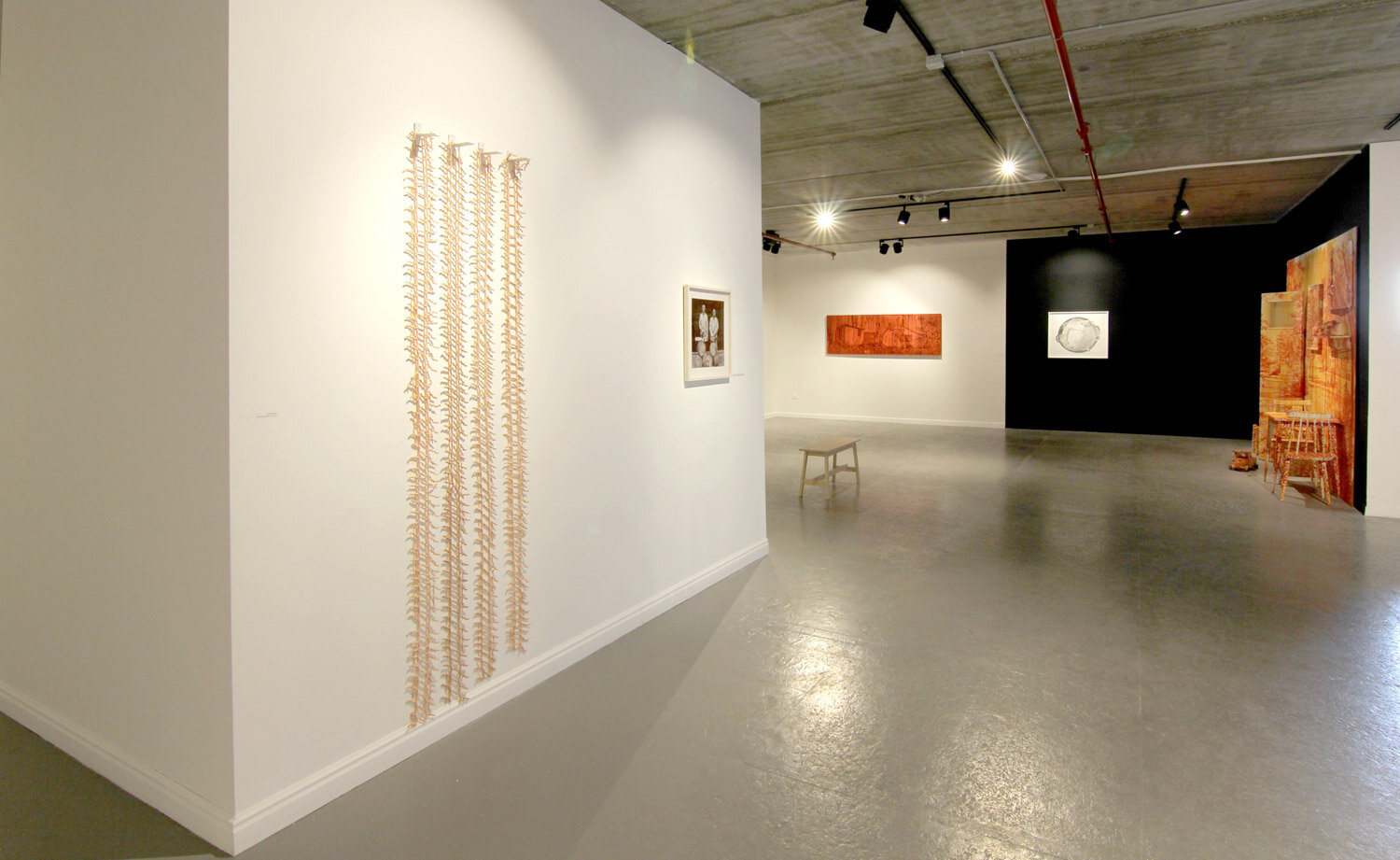
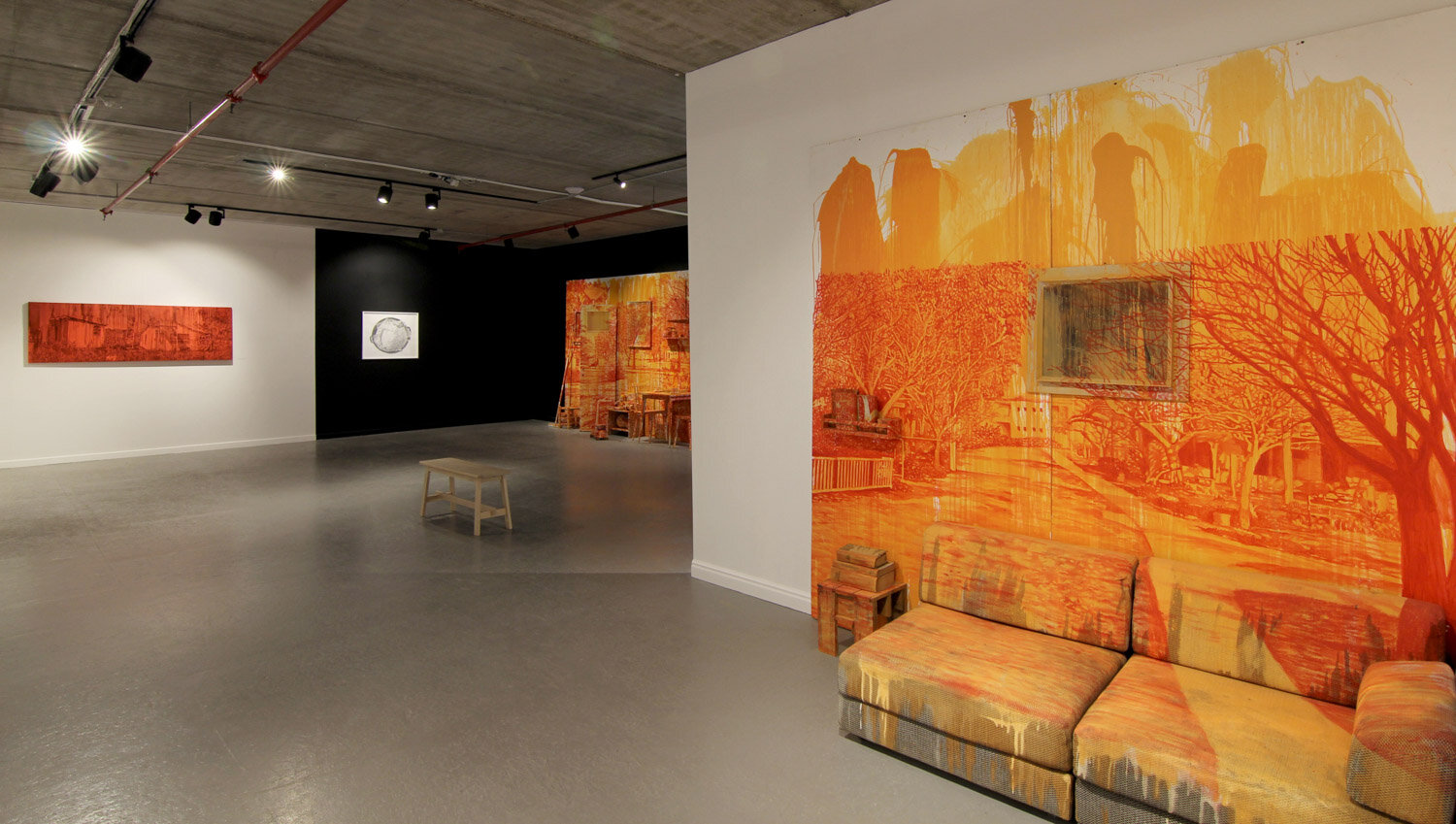
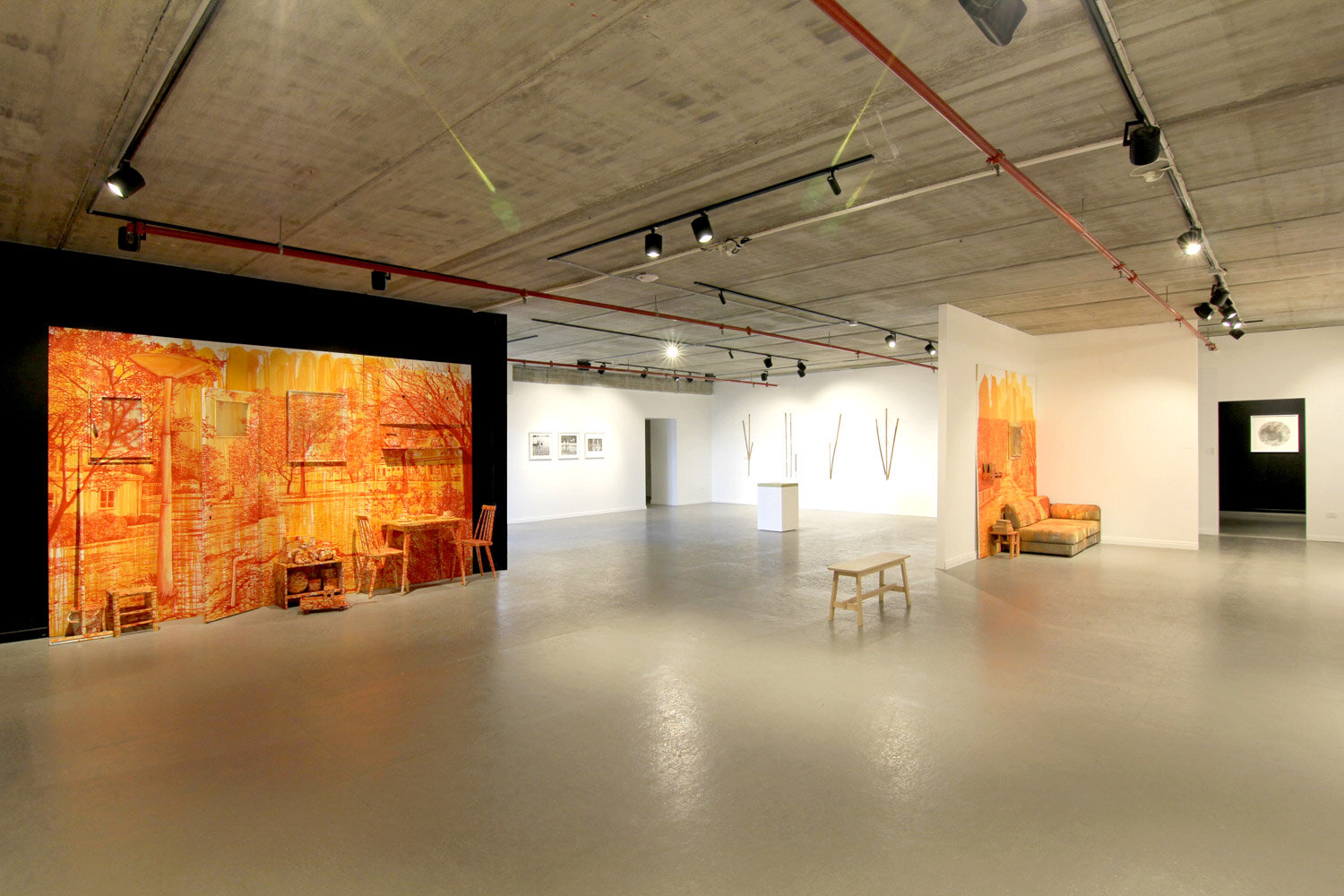
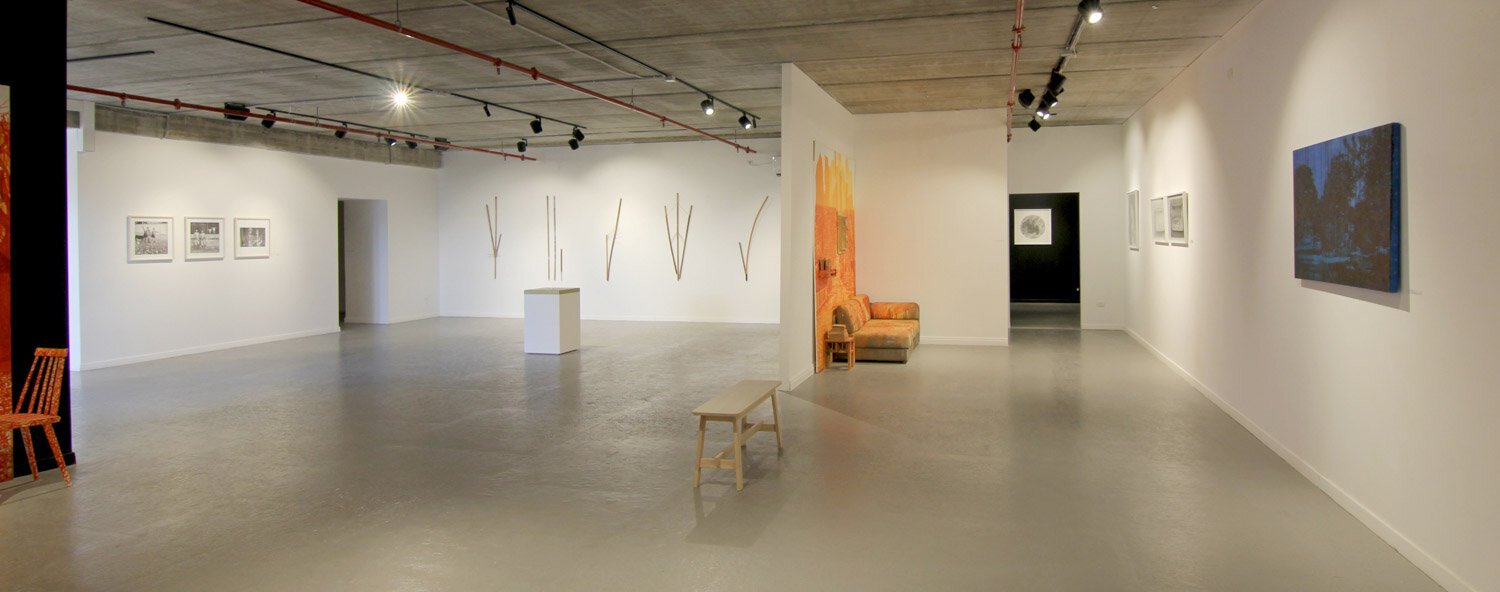
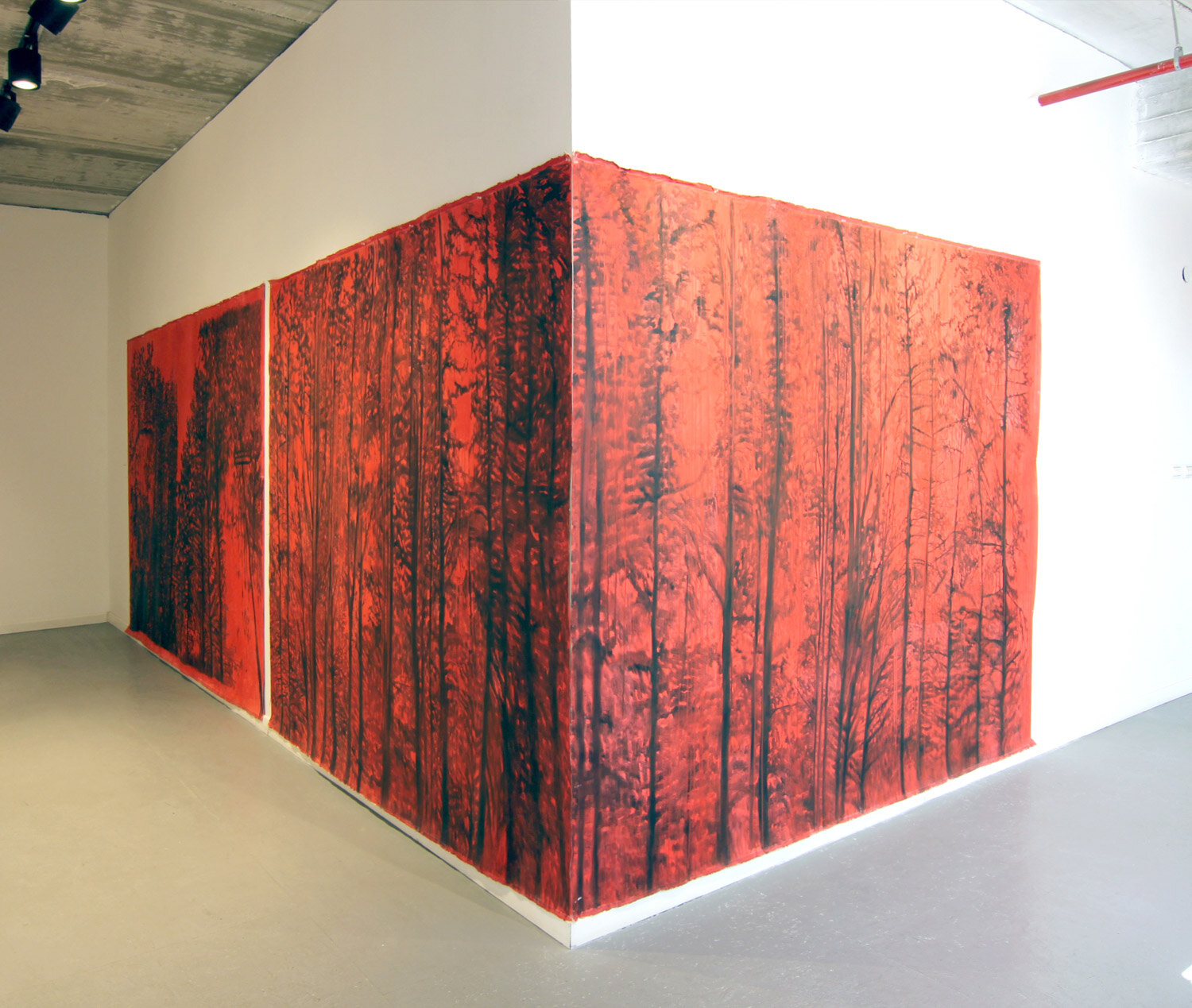

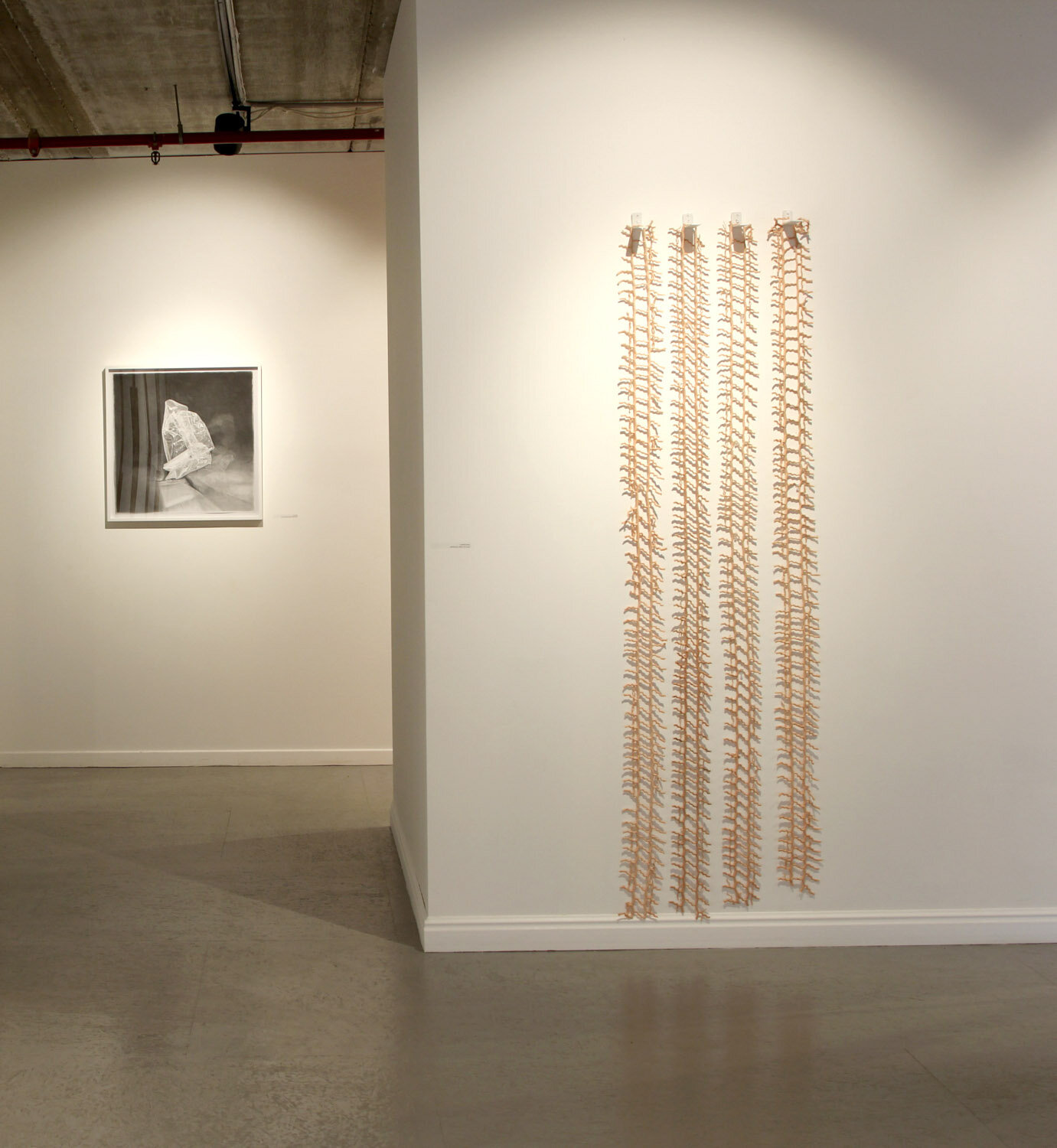
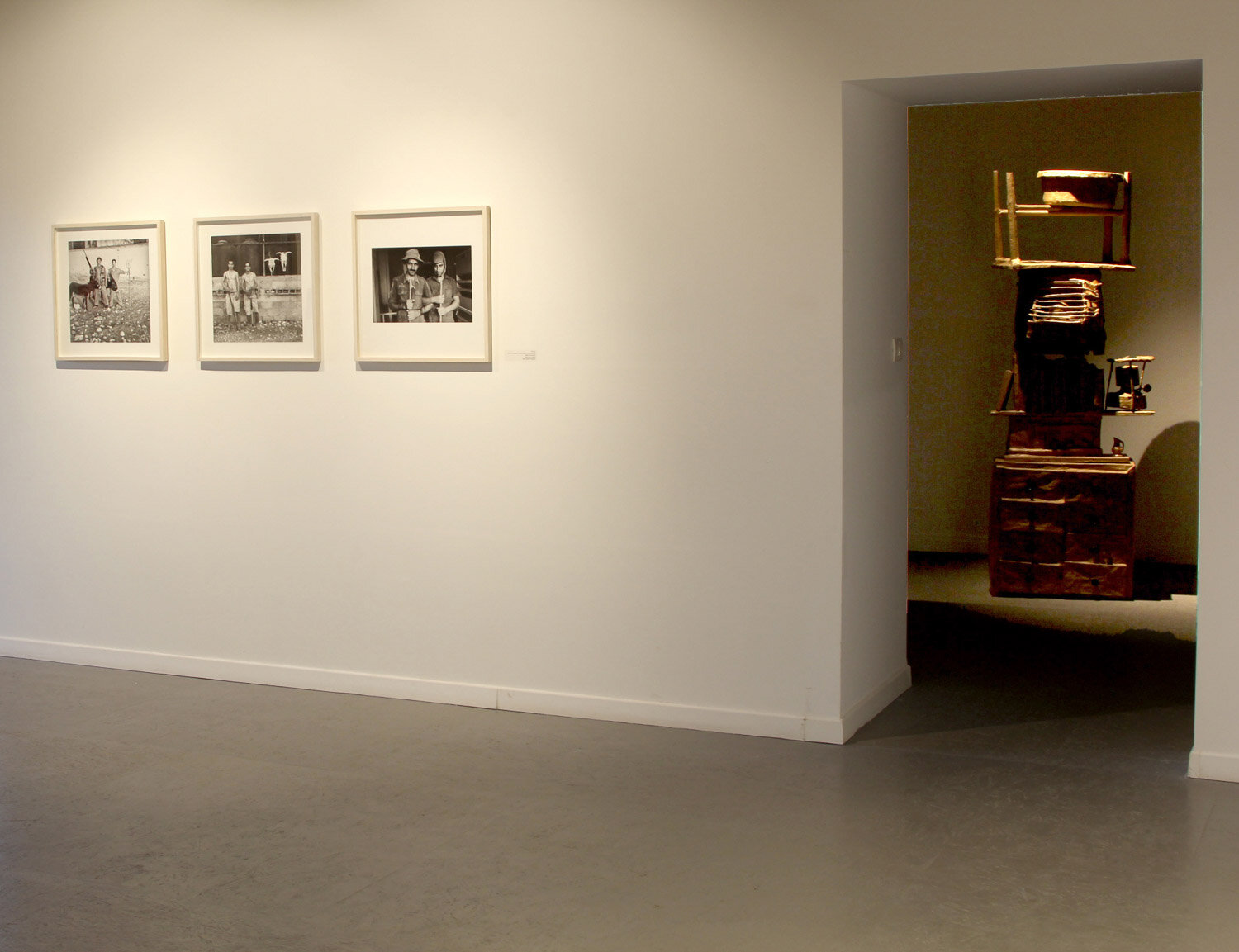
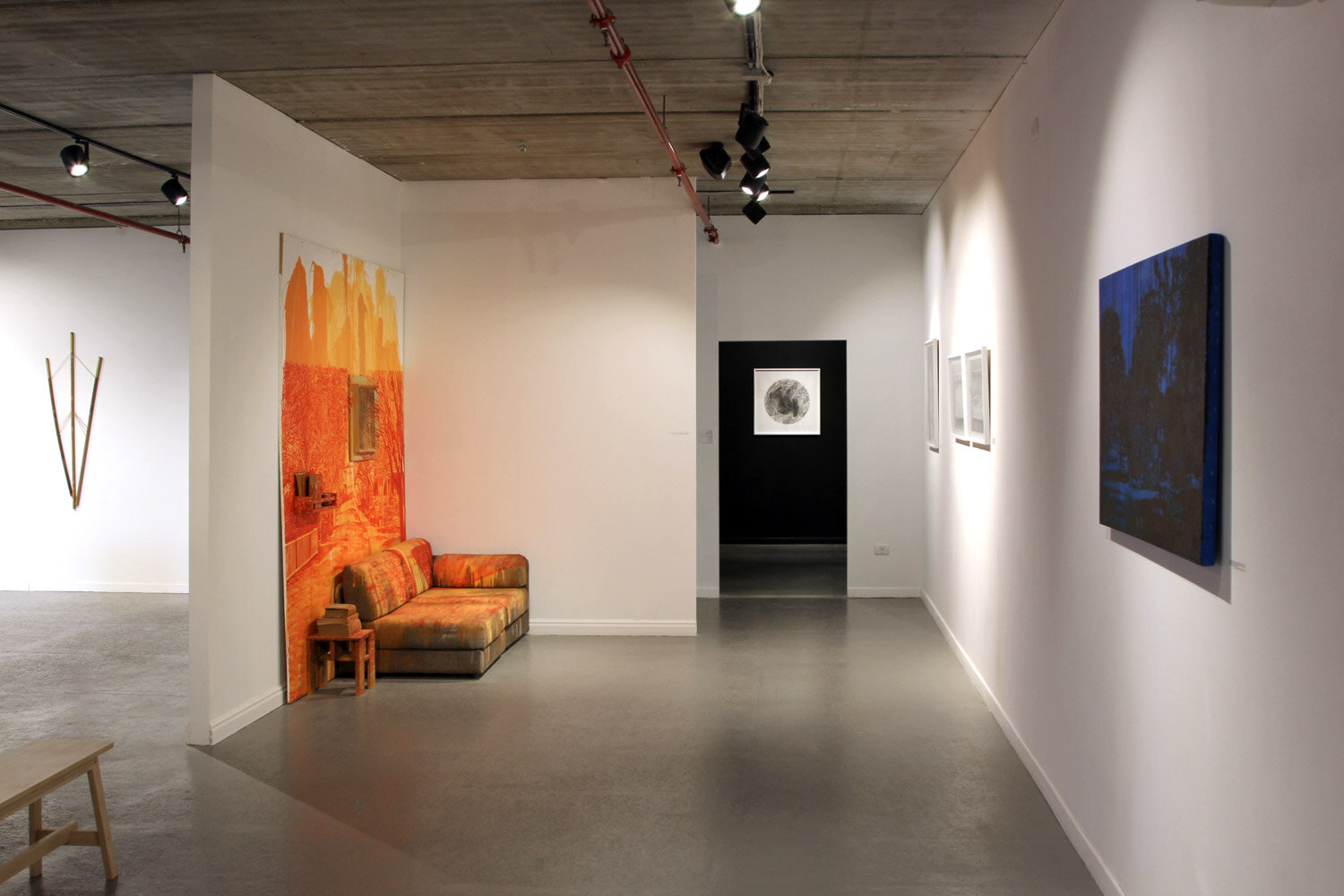

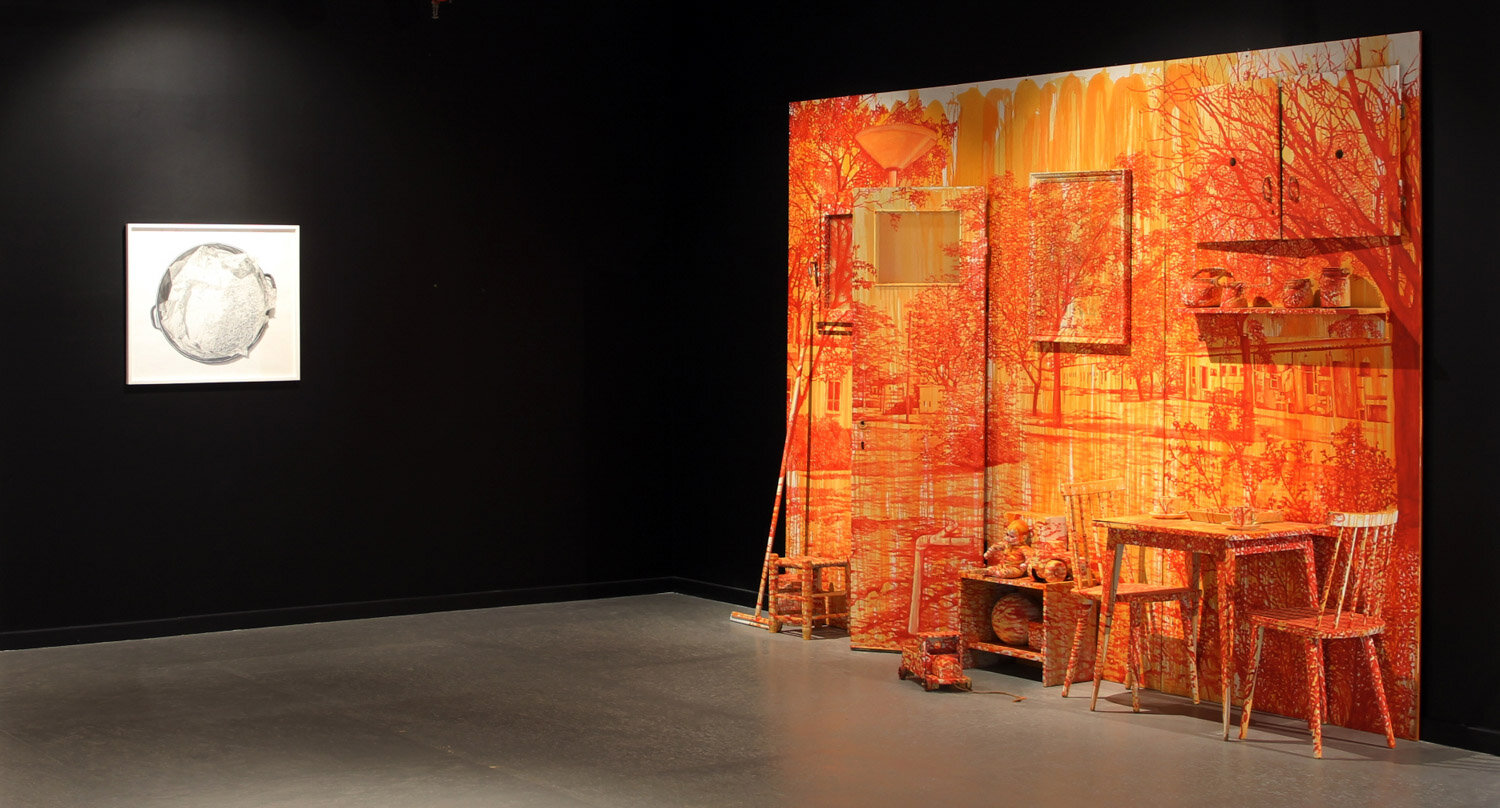
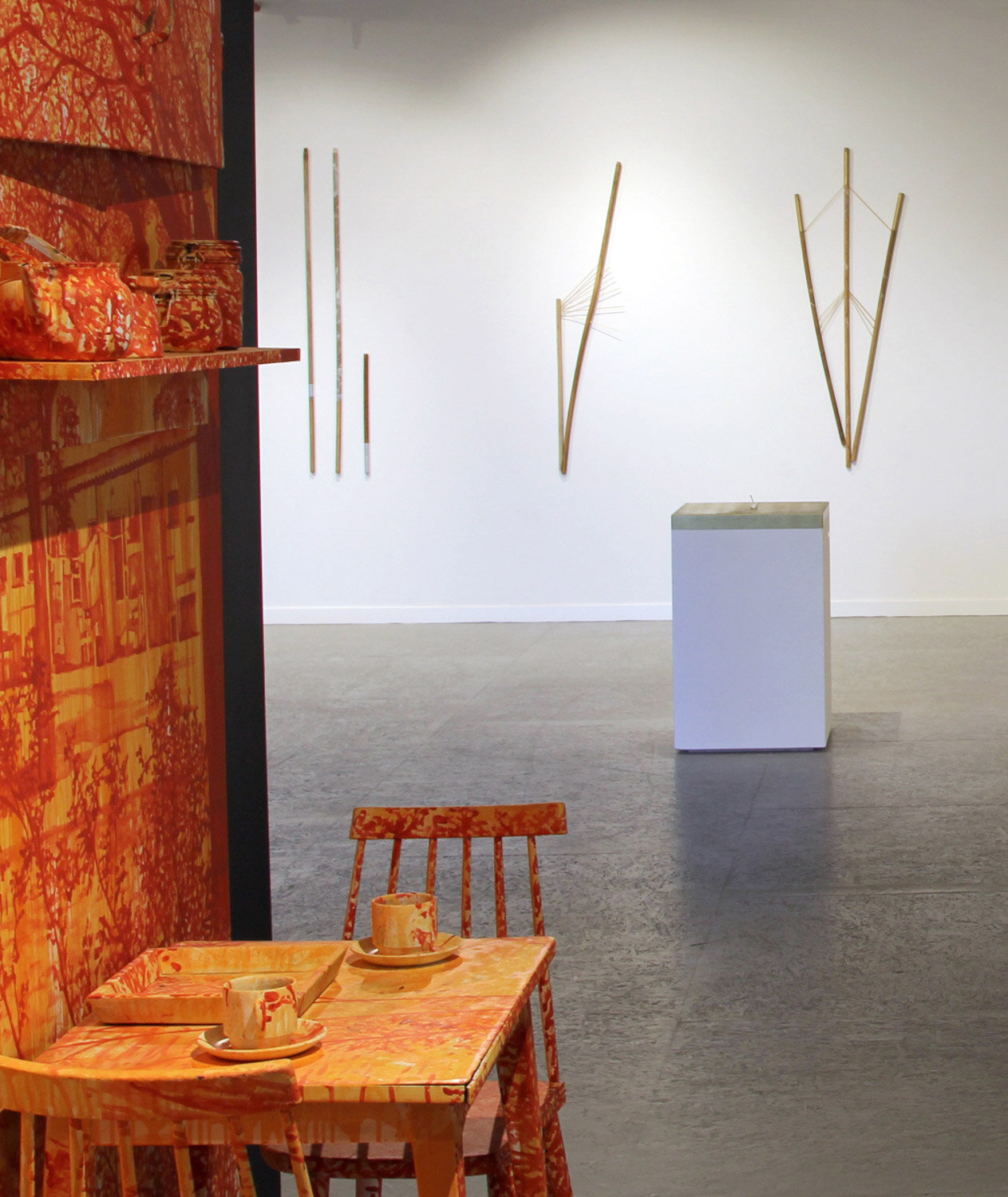
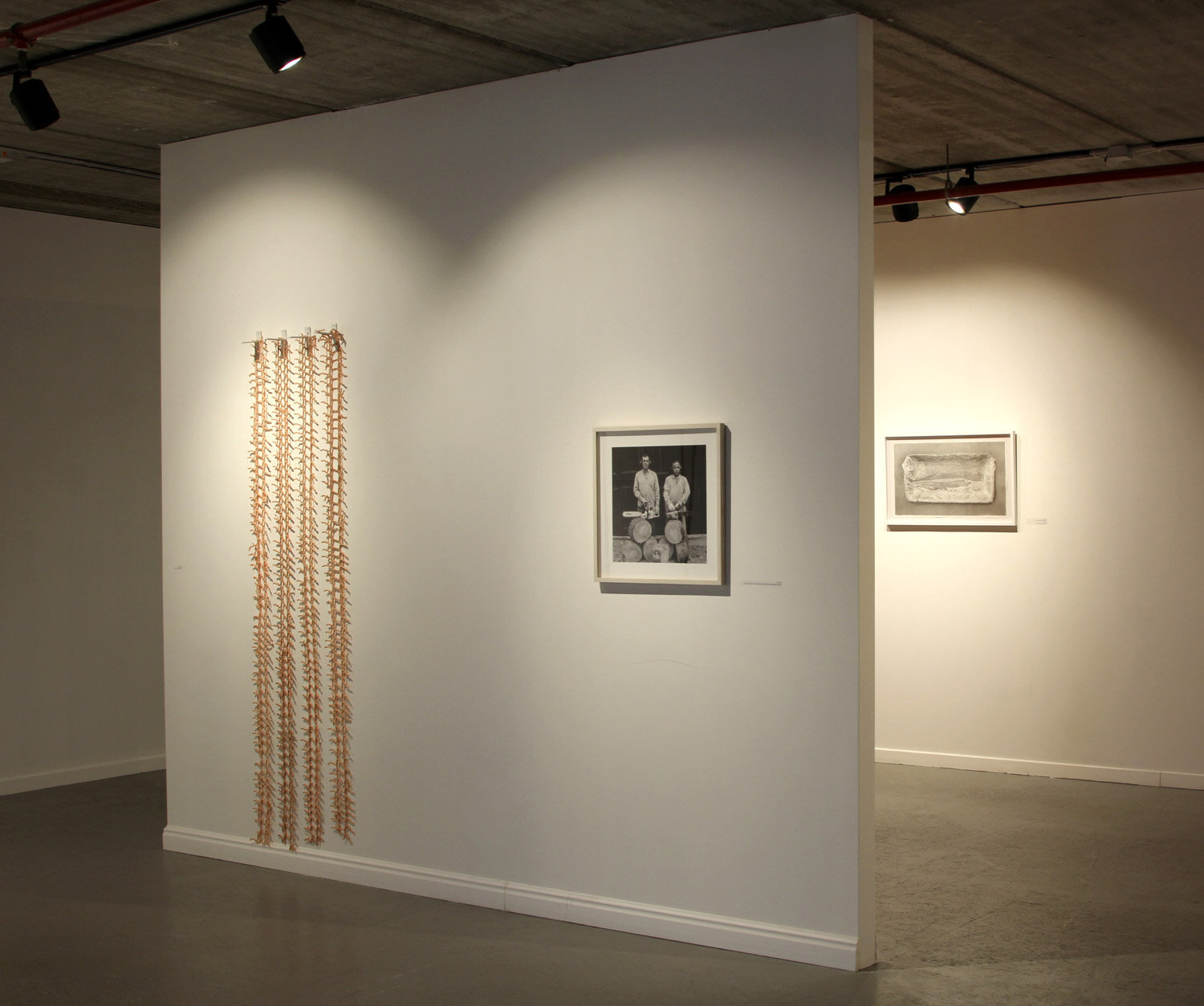
The SandMan exhibition English text is following under the Hebrew text
איש החול
לעת ערב, מבקר איש-החול בחדרי שינה (בעיקר של ילדים) ומפזר על עיניי הנרדמים אבקת חול קסמים המעודדת חלומות טובים ויפים ומשרה שינה עמוקה ונעימה. איש החול The Sandman הוא דמות אגדית המופיעה בסיפורי עמים אירופאיים במגוון גלגולים, לרוב, כדמות חיובית, אך בחלק מהגרסאות כדמות מאיימת, המעוררת ביעותים ואף גונבת את עיני הילדים ומאכילה בהן את ילדיה שגרים על הירח.
בגרסה הדנית של האנס כריסטיאן אנדרסון, איש החול נקרא אולה לוקה Ole Lukøje. אולה לוקה מעניק לילדים חלומות טובים או רעים בהתאם להתנהגותם במהלך היום. באגדה הוא מתגלה כאל-שינה שלו אח הנושא שם זהה. אולם, אולה לוקה האח, מבקר את הנרדמים פעם אחת בלבד, בשנתם האחרונה, הוא סוגר את עיניהם ולוקח אותן איתו לנצח.
ייתכן והגרסה הדנית, מביעה בצורה הפשטנית ביותר והמאיימת ביותר, את קיומם הסימולטני של שני צדדים מנוגדים לחלוטין באלמנט יחיד: אל-השינה נותן את שנת הלילה המתוקה, כמו גם את שינת הנצח. כך מתקיימים הן המיוחל והן המאיים בדמותו הסמלית של אולה לוקה.
בהשראת הגרסה הדנית, כתב ב1816 א.ת.א הופמן, את הסיפור 'איש החול'[1], גרסה ספרותית, קודרת, רוויית מיסטיקה וכשפים. בהשראת סיפור זה, כתב פרויד ב1919 את המאמר 'Das Unheimliche' ותבע את המונח 'אלביתי'.
מסע שהחל לפני מאות שנים בסיפורי עמים על איש החול, התגלגל והפך לאחד ממושגי היסוד בפסיכואנליטיקה ובתרבות המערבית העכשווית. 'Unheimliche' בגרמנית, 'Uncanny' באנגלית, 'אלביתי' בעברית הוא מונח פרוידיאני המחבר בין שתי חוויות מנוגדות: הביתי והמבעית, המוכר והזר.
ה'אלביתי' מתקיים ברווח שבין חוויות מנוגדות, בין הממשי למדומה, בין החיים למוות, בין הטבעי למלאכותי, בין החלום לסיוט, בין האנושי לטכנולוגי... מהותה של חוויית ה'אלביתי' היא במעבר הבלתי צפוי מן המוכר, הבטוח והיומיומי לזר, למבעית, למעורר החרדה. ה'אלביתי' מבטא את חציית הגבולות בין הידוע לבין הנסתר, את מה שאינו מתקיים במציאות ואז פתאום מתנחל בה ואף ניתן להסביר אותה באמצעותו.
"החופש, ההישגים העצומים של המודרניות והנינוחות שהם מאפשרים, מבליטים גם את ניגודם – זרות, ניכור, בדידות ואימה". [2]
*
דברים שבשיגרה: אריזות מזון; מסמרים שנתלשו מקיר; חקלאים אוספים חציר; שבילים לאור שקיעה; הרשימה ארוכה, בנאלית ואינסופית… נדרשת רק פעם אחת מתוך אלף פעולות שבשגרה, כדי שמשהו מוכר, מובן מאליו, המלווה את היום-יום באגביות נהדרת, יהפוך במעבר פתאומי - לזר, מוזר ומנוכר.
בתערוכה איש החול מציגים ארבעה אמנים שעבודותיהם נוצרו מתוך התייחסות לסביבה הביתית או למרחב הקרוב אליהם ונעשו באמצעות חומרים זמינים ויומיומיים. במהלך כמעט אגבי, הסביבות הקרובות בעבודותיהם מבטאות תחושות של זרות, ניכור ואפילו איום. בעבודות קיימים הניגודים שבין המוכר והמנוכר, המזוהה והידוע אל מול המאיים והמפתיע: חברי הקיבוץ בצילומיו של בועז לניר נראים כדמויות מסרטי אימה; החפצים הביתיים של אפרת קליפשטיין הופכים לפסלי כלי-מלחמה; סביבת הקיבוץ המוכרת של זיוה ילין נמסה ונוזלת בציוריה; אריזות פלסטיק בלויות ברישומיה הריאליסטיים של אילנה דותן, נודפות את ריחו החמוץ-מתוק של הריקבון.
להמשך קריאה מומלצת על מונח ה'אלביתי':
1. ערך: המאוים, אל-ביתי, מצמרר, מבעית, The Uncanny, מתוך אתר האנציקלופדיה של הרעיונות
2. על אימה ובית: מושג האלביתי, גלגוליו ומשמעויותיו של מושג ה״אלביתי״ בפסיכואנליזה ובתרבות, מאמר מאת יואב יגאל
* תקציר 'איש החול' מאת א.ת.א הופמן 1816:
גיבור הסיפור, נתנאל, הוא צעיר שבילדותו נהג איש בשם קופליוס לבקר את אביו בלילות. אמו של נתנאל כינתה אותו בשם "איש החול", והאומנת תיארה אותו כ"איש רע, שבא אל ילדים שלא רוצים ללכת לישון וזורה בעיניהם חול, עד שהן מתמלאות דם ופורצות מהראש החוצה" (עמ' 57). באחד הלילות, שומע נתנאל את קופליוס האורח הלילי קורא: "הבו עיניים, הבו עיניים!". הוא נבהל והאורח מאיים עליו שיזרה גחלים בעיניו. נתנאל מתעלף ונעשה חולה למשך זמן רב. שנה לאחר מכן, בביקור נוסף, נהרג האב מפיצוץ מסתורי וקופליוס נעלם. בבגרותו, נתקל נתנאל באופטיקאי נודד המציע לו "עינות יפים, עינות יפים". גל חרדה הקשור לאיש החול ולאיום מימי ילדותו לעקור את עיניו מציף אותו. למרות זאת, הוא רוכש את ה"עינות" - המשקפת, באמצעותה הוא עוקב אחר אישה צעירה, יפיפיה, הנשקפת מהחלון ממול לחדרו. נתנאל מתאהב ומחליט לפגוש אותה בביתה. בעת הביקור מסתבר שהיפיפיה היא אולימפיה, בובתו המכאנית של האופטיקאי. נתנאל נתקף טירוף אך לאחר תקופת אשפוז ממושכת, הוא מתכנן לשאת לאישה את קלרה ארוסתו. הם עולים למגדל במרכז העיר וקלרה מצביעה על דמות המתקדמת לעברם. נתנאל מוצא בכיסו את המשקפת ומזהה את קופליוס שהגיע באותו זמן לעיר. נתנאל שוב נתקף בטירוף, הזיות ופחדים מציפים אותו. קופליוס צוחק ואומר: "חכו מעט, הוא יגיע למטה בעצמו" ואכן נתנאל מטיל את עצמו מהמגדל אל מותו.
אילנה דותן
רישומיה הריאליסטיים והעמלניים של אובייקטים תעשייתיים מוגדלים, שייכים למסורת ציורי הטבע-הדומם still-life המבטאת אלגוריה לקשר שבין החי למת. דותן רושמת מוצרים יומיומיים שהשימוש שנעשה בהם גרם להם לקבל "אופי" או זהות ייחודית. המוצרים שייכים בעיקר לבית/למטבח וקשורים להזנה והגנה: עטיפה של גבינה, אריזת צלופן של עוגה, אריזת שיפודי עוף, רדיד אלומיניום ועוד. אלו "חומרים אפורים" המאופיינים באסתטיקה צנועה ואינם מייצרים "רעש" רגשי או ויזואלי, כולם עשויים חומרים סינטטיים ("מתים") המהווים חלק מרכזי בתרבות הצריכה ומהדהדים אספקטים אנושיים של שינוי עקב כוחות חיצוניים השוחקים ומעצבים את האדם. דרך רישום חומרים נפוצים אך שוליים אלו, נוגעת דותן בשאלות גדולות על זמן ומוות, על המתח בין המתועש, המיידי והטכנולוגי לבין האנושי והחד פעמי הנוצר לאורך זמן ממושך.
זיוה ילין
ילין יוצרת ועובדת מתוך חיבור רגשי למקום, מתוך היכרות עמוקה כמו גם מתוך התפלאות מחודשת מסביבה ידועה ומוכרת. קיבוץ בארי, בו נולדה, גדלה, חיה ויוצרת, הוא בית, הוא בן-משפחה מקרבה ראשונה, הנוכח בכל שכבות חייה. בעבודותיה, ילין כמו מביטה מעמדה חיצונית, ממוקמת ממרחק, פורשת את מרחבי בארי ואת החפצים שליוו את חייה, כסצנות עתירות משמעות. מרחבי הקיבוץ מובעים במונוכרומטיות דרמטית שמטעינה את האווירה בדריכות ובחשדנות. הדימויים, הן המצוירים והן המפוסלים, מוגשים תחת שכבה מטשטשת, מכוסים בזפת נוזלת או עטופים בנייר אריזה, כקליפות, כזיכרון מתעתע. בעבודותיה נוכחת הדואליות שבין המוכר והמנוכר ויש בהן תחושת איום כמו בחווית צפייה בסרט מותח, כשמחכים לדבר מה שיצוץ במפתיע, מאחורי העצים, מתוך הצריף, בשעת הדמדומים…
בועז לניר
לניר מצלם/מתעד במשך חמישים שנה, בסגנון הנע בין הדוקומנטרי לאמנותי, אנשים בקיבוץ שער העמקים: חברי קיבוץ, עובדים, מתנדבים, מבוגרים וצעירים. המצולמים מתועדים בסביבתם הטבעית ומשתפים פעולה עם לניר שמביים את תנוחת גופם ואת הפרטים השונים המקיפים אותם. לניר מחפש את המבטים ואת העמידות המשונות כדי לספר סיפור רב שכבתי על מקום. הדמויות נראות לפעמים מוזרות, שרויות באיזה עולם סגור משלהן, מגבירות את תחושות המסתורין שאופפת את הצילומים. למרות אפשרות הזיהוי והשיוך של המצולמים ושל סביבתם לנוף הישראלי, עולה הספק מה הוא העולם המצולם, מתי תועד ומה התרחש שם. האם זהו קיבוץ שער העמקים בשנות ה-2000 או שמא זהו עולם רחוק, יבשת אחרת במאה אחרת?…
אפרת קליפשטיין
האובייקטים המוצגים בתערוכה הם חלק קטן מתוך שני גופי עבודות רחבים. חלקי המטאטאים, המסמרים ורישומי הפרפרים שייכים לגוף העבודות 'אבק בעיניי', תחרת הסיליקון שייכת ל'בדרכי אליך'. בעבודותיה, מצביעה קליפשטיין על "האופן שבו מסע מגדיר את קיומו של בית" ועל האפשרות המטלטלת שהמוכר והבטוח עשויים להיסדק. נקודת המוצא נובעת מתוך בחינת היחסים המורכבים בין מושגים של יציבות ובית לבין מושגים של ערעור וטרנספורמציה. האובייקטים מהם עשויות העבודות, נאספו מתוך המרחב הביתי הקרוב והמוכר והומרו לכדי תצורות חדשות הרומזות על מסע ודרך אישיים שהתחוללו. שמירת זיהוי מקור האובייקט ומהותו הבסיסית, מבליטה את התערערות היציבות, השתנותה והשתייכותה למערכת חוקים וסדר חדשים.
The Sandman
Ilana Dotan, Ziva Yellin, Boaz Lanir, Efrat Klipshtien
Curator: Rotem Ritov
When night falls, the Sandman pays a visit to bedrooms (mostly those of children) and sprinkles into the sleeper’s eyes magic sand, which helps bring good, beautiful dreams, and lulls his hosts into a deep and pleasant sleep. The Sandman is a legendary character who appears in European folklore in a variety of incarnations, usually as a positive figure, yet in some versions as a threatening figure, which elicits horror and even steals children’s eyes and feeds them to its own children who live on the moon.
In the Danish version by Hans Christian Andersen, the Sandman is named Ole Lukøje. Ole Lukøje grants children good or bad dreams, depending on their behavior during the waking hours. In the fairy tale, he is revealed as a sleep deity who has a brother with an identical name. However, the brother Ole Lukøje visits sleepers only once, during their final sleep, when he closes their eyes and takes them with him into eternity.
Perhaps the Danish version expresses, in the simplest and most threatening manner, the simultaneous existence of two completely conflicting sides within a single entity: a sleep deity who grants sweet nighttime sleep, as well as eternal sleep. Thus, both the desired and the feared are present within the symbolic figure of Ole Lukøje.
Inspired by the Danish version, in 1816 E.T.A. Hoffmann authored the short story, “The Sandman”[1], a dark, literary version replete with mysticism and sorcery. This story was Freud’s inspiration for his 1919 essay “Das Unheimliche”, in which he coined the term ‘uncanny’.
A journey that began hundreds of years ago with folktales about the Sandman was transformed into one of the fundamental principles of psychoanalysis and contemporary Western culture. “Unheimliche'' in German, “Uncanny” in English and “al-bayti (אלביתי)” in Hebrew is a Freudian term which combines two contrasting experiences: the homelike and the horrific, the familiar and the foreign.
The “uncanny” can be found in the space between conflicting experiences, between the real and imagined, life and death, natural and artificial, dream and nightmare, human and technological. The essence of the “uncanny” experience is the unexpected switch from the familiar, and safe to the foreign, horrific, and anxiety-provoking. The “uncanny” expresses a crossing of the boundary between the known and the hidden, it is that which does not exist in reality and then suddenly takes root in it, following which reality can even be explained by it.
Routine objects: food packaging, nails torn from walls, farmers collecting hay, paths at sunset, the list is long, banal and infinite... Just one act is needed from among thousands of routine acts for something familiar which we take for granted and which is part of daily life in a fabulously casual manner, suddenly transform into something foreign, strange and alien.
The exhibition “Sandman” presents the work of four artists whose work was created in reference to their immediate or domestic surroundings using readily available everyday materials. Almost by chance, the immediate surroundings in their works express feelings of foreignness, alienation and even threat. Contrasts between familiar and alien, and between the identifiable and recognizable versus the threatening and surprising, are present in their works: kibbutz members look almost like characters out of horror films in the photographs of Boaz Lanir; Efrat Klipshtein’s everyday objects are transformed into sculptures of weaponry; the familiar kibbutz surroundings melt and drip in Ziva Yellin’s paintings; worn-out plastic packages reek with the bittersweet smell of decay in Ilana Dotan’s realistic drawings.
* For further recommended reading on the term “uncanny”:
Entry: The Uncanny, in the Encyclopedia of Ideas
“On Terror and Home: the Transformations and Meanings of the Term “Uncanny” in Psychoanalysis and in Culture”, an essay by Yoav Yigael
** Summary of “The Sandman” by E.T.A. Hoffmann 1816:
The story’s protagonist, Nathanael, is a young man. During his childhood, a man named Coppelius used to visit his father at night. Nathanael’s mother called him the “Sandman”, and the nanny described him as “a wicked man, who comes to children when they won’t go to bed, and throws a handful of sand into their eyes, so that they start bleeding from their heads” (p. 57). One night, Nathanael hears Coppelius the nighttime guest cry out: “bring eyes, bring eyes!”. He becomes alarmed and the guest threatens to sprinkle coal in his eyes. Nathanael faints and becomes ill for an extended period of time. A year later, in another visit, the father is killed in a mysterious explosion and Coppelius disappears. When he matures, Nathanael meets a wandering optician who offers him “beautiful binoculars, beautiful binoculars!”. He is overcome by a wave of anxiety related to the Sandman and the childhood threat to pull out his eyes. Nevertheless, he purchases the binoculars, which he uses to follow a young, beautiful woman in the window across his room. Nathanael falls in love and decides to meet her in her home. During the visit, it becomes clear that the beauty is Olympia, an automaton created by the optician. Nathanael loses his mind but after a long hospitalization, he plans to marry his fiancée Clara. They climb up a tower in the town center and Clara points to a figure approaching them. Nathanael finds the binoculars in his pocket and identifies Coppelius, who had just arrived in town. Nathanael loses his mind again and is overtaken by hallucinations and fears. Coppelius laughs and says, “wait a bit, he will come down on his own” and indeed Nathanael throws himself from the tower to his death.
Ilana Dotan
Her labor-intensive, realistic drawings of enlarged industrial objects belong to the tradition of still-life painting, which serves as an allegory for the connection between the living and the dead. Dotan draws everyday products which through use have developed “character” or a unique identity. The products belong primarily to the home/kitchen and are connected to nutrition and protection: a cheese wrapper, a cellophane cake package, a package of chicken shish-kababs, aluminum foil and more. These are ''gray materials' ' characterized by a modest aesthetic and they do not create emotional or visual “noise”. They are all made of (“dead, lifeless”) synthetic materials which constitute a central part of consumer culture and echo human aspects of change due to external forces which wear out and form the individual. By drawing these common yet marginal materials, Dotan touches upon larger questions of time and death, tension between the industrial, immediate and technological and the unique and human, which is created for long-term use.
Ziva Yellin
Yellin creates and works out of an emotional connection to place, through deep familiarity as well as newfound wonder vis-à-vis well-known, familiar surroundings. Kibbutz Be’eri, where she was born and raised, and now lives and works, is a home, it is a first-degree relative, which is present in all layers of her life. In her works, Yellin observes from the outside, from a distance, and lays before us Be’eri’s wide expanses and the objects that have accompanied her in her life, treating them as scenes replete with meaning. The wide expanses of the kibbutz are portrayed in dramatic monochrome, which fills the environment with suspicion and alarm. Her works, both painted and sculpted, are presented beneath a layer that blurs, covered in dripping tar or wrapped in packaging, like a peel, as a confusing memory. The duality between the familiar and the alien is present in her works, and they have a feeling of threat, like the experience of watching a suspenseful film, or waiting for something to pop out unexpectedly from behind the trees, or from within a hut, at dusk…
Boaz Lanir
Lanir has been photographing/documenting people at Kibbutz Sha’ar HaAmakim for fifty years, in a style that shifts between documentary and art. His subjects are: kibbutz members, workers, volunteers, old and young. The subjects are documented in their natural surroundings and they cooperate with Lanir, who orchestrates their poses and the various details surrounding them. Lanir searches for glances and unusual stances in order to tell a multi-faceted story about the place. At times the figures appear strange, engrossed in some internal world of their own, which intensifies the mysterious feeling pervading the photographs. Although the subjects and surroundings can be identified as belonging to the Israeli landscape, it is unclear which world has been photographed, when it was documented and what happened there. Is it Kibbutz Sha’ar HaAmakim in the 21st century or some distant world on another continent in a different century?
Efrat Klipshtein
The objects presented in the exhibition are part of two larger bodies of work. The broom parts, nails and drawings of butterflies belong to a body of work entitled “Dust in My Eyes”, while the silicon lace belongs to “On My Way to You”. In her works, Klipshtein points to “the way in which a journey defines the existence of a home”, and the unsettling possibility that the safe and familiar could be upended. The starting point stems from an examination of the complex relations between concepts of stability and home as well as concepts of destabilization and transformation. The objects from which the works are made were collected from the immediate, familiar domestic space and were converted into new forms which hint at the personal journey and path they have undergone. By maintaining the original identity and basic essence of the object, the destabilization, change and attachment to a new system of law and order, are emphasized.
[1] “The Sandman” is one of five short stories in the collection “The Night Pieces” by E.T.A. Hoffmann (1816).


